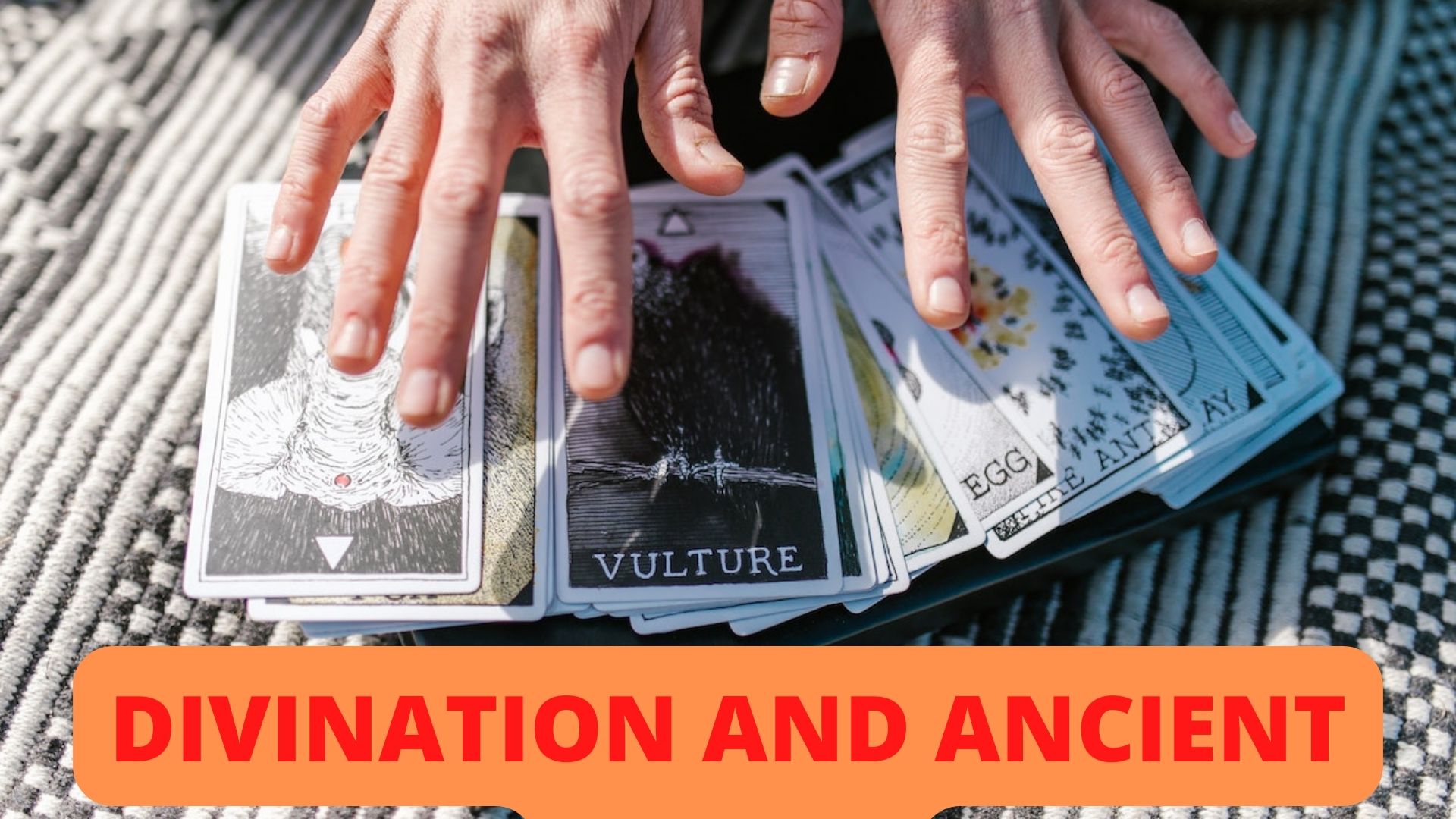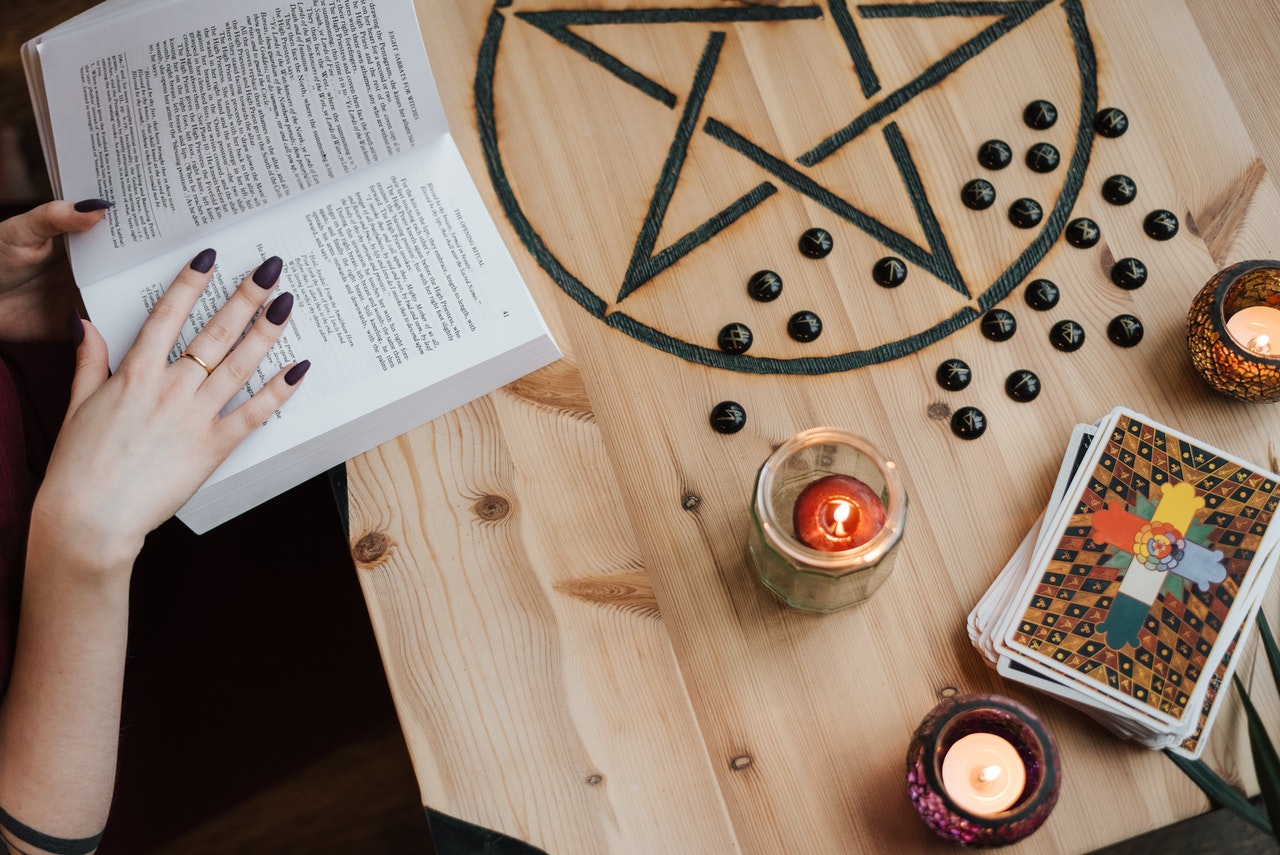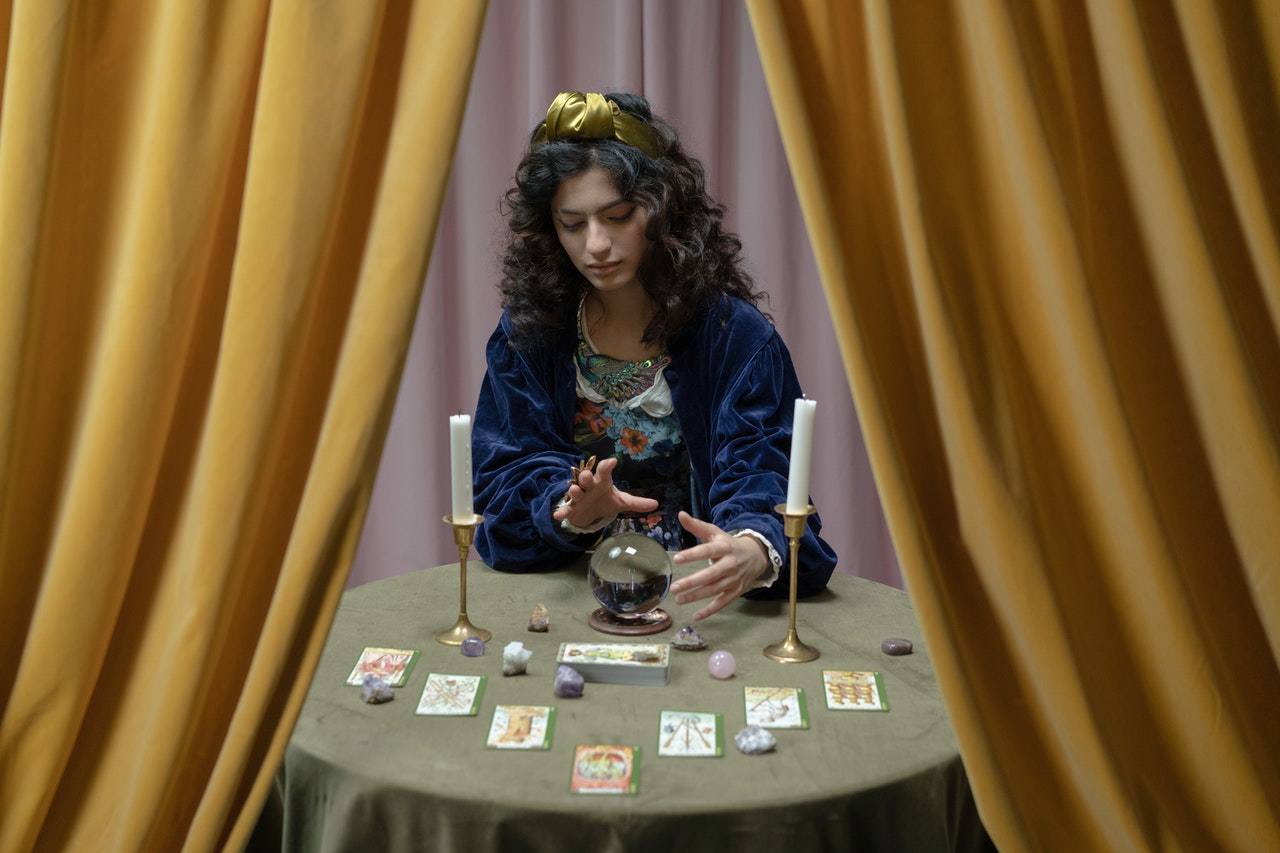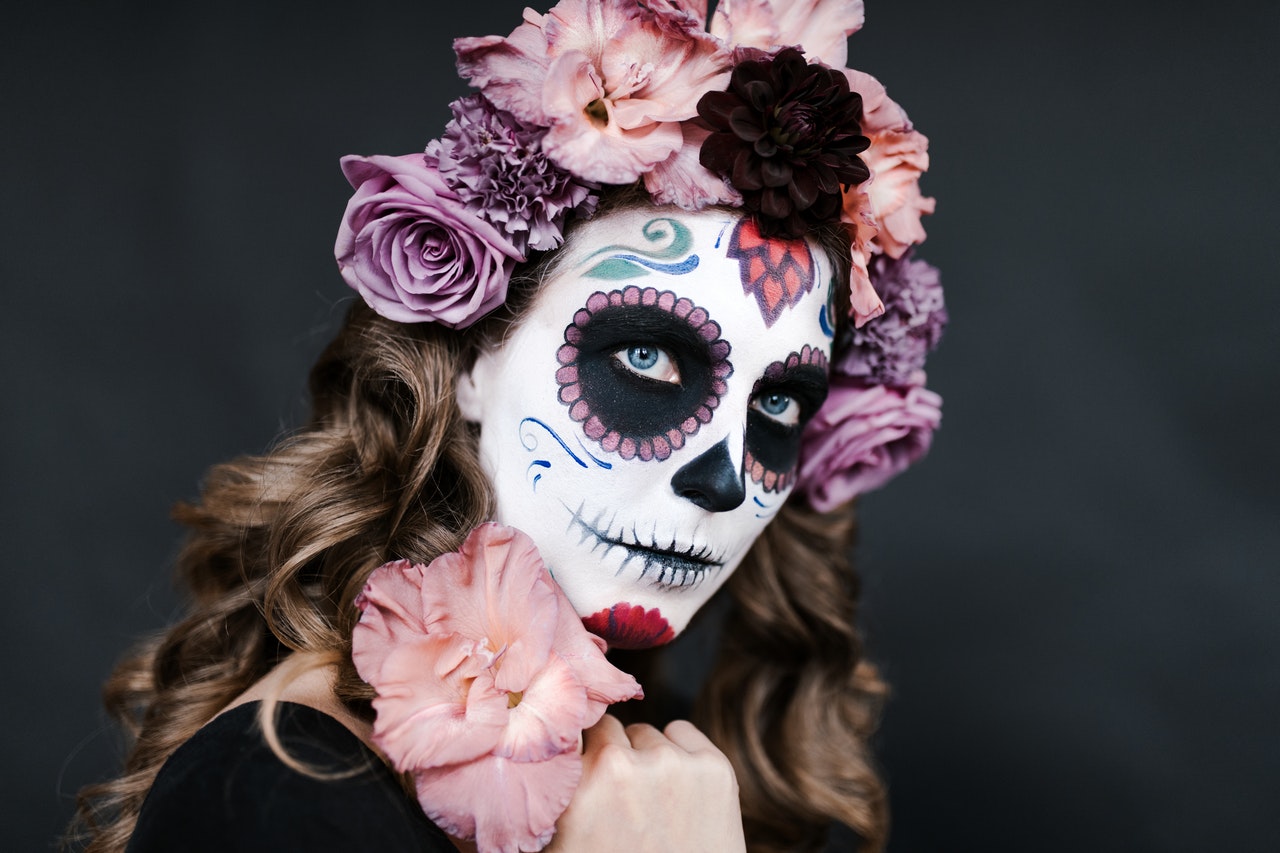Divination And Ancient Magic
Divination is the practice of using supernatural methods to learn about the unknown or the future. The word divination is derived from the Latin word divination, which denotes the capacity for prophecy. It is difficult to define and has numerous definitions, nevertheless.
Author:Aurora SmithReviewer:Ava MartinezMar 19, 2024803 Shares25.8K Views

Divinationis the practice of using supernatural methods to learn about the unknown or the future. The word divination is derived from the Latin word divination, which denotes the capacity for prophecy. It is difficult to define and has numerous definitions, nevertheless.
- To simplify it, Aleister Crowley used the phrases "Of what are things composed?" and "How dothings work?" as well as, "How can we combine them to our advantage?"
- The Farrars said that divination is "clairvoyance with tools," which is "the art and science of knowing facts, objects, or situations through psychicmeans when they are not open to ordinary awareness".
- The Ciceros of the Golden Dawn calls it "the art of figuring out the divine meaning behind random things that happen."
- All divinatory methods, according to Starhawk, ultimately strive to direct awareness and activate the enhanced intuition and perception made accessible by trance. These methods are being employed for "spiritual and psychological counseling" as well as "for fortune-telling."
By putting all of these things together, we can see that divination enables us to gain a perspective on a situation or an object to an extent that is not typically feasible, and using this understanding as a foundation, enables the diviner to anticipate future development.
The seeker is then presented with analyses and suggestions based on this information.
Divination Nature And Significance
Divination is always concerned with practical issues, whether they be personal or public, and seeks information on which judgments can be made that are practical; nevertheless, the source of this knowledge is not thought to be ordinary, and the method of obtaining it is inevitably fantastical.
The mantic (divinatory) arts are numerous, and the only way to gain a comprehensive understanding of them is to examine actual activities in various cultural contexts.
A brief description, however, can be provided as a starting point: divination is the attempt to obtain information of a mundane kind by methods thought to transcend the commonplace.
The subject of divination (like that of magic) is ephemeral; examples include an illness, a concerning portent, or a missing thing.
However, the act of divination is accompanied by reverence, and the participants in the divinatory act may have a religious attitude. A diviner may be consulted on everything from a simple question about a few missing coins to significant matters of state.
Divination is a consultative institution. The casual or solemn nature of the matter is normally matched by that of the diviner in terms of attitude, technique, and style. If the diviner is a private practitioner, the cost may reflect how complex the process is.
The ancient Etruscans in Italy and the Maya in Mexico regarded the position of diviner-priest as sacrosanct; his concern was for the very destiny of his people, in contrast to the worldly reasons of certain diviners.
There are numerous justifications for divination, making it challenging to categorize the diviner as a particular socioeconomic type.
He or she could be a priest, a magic medicine vendor, a shaman (a private healer who uses psychicmethods; see shamanism), or a holy figure who speaks almost in the manner of prophecy.
One needs to be conversant with prevalent ideas about man and the world to understand the relevance of the diviner's art in any culture or period.
In the era of Christianity, Europe transitioned from fear of necromancy, which was seen as a literal "rising of the dead" rather than a consultation with a ghost, to an amused tolerance of spiritualism among the educated.
To claim that European religious beliefs have not changed throughout the Common Era is to dismiss the effects of secularization and modern science.
On the other hand, to assume that science and secularism have condemned divination to extinction would be to dismiss astrology's enduring appeal and other mantic disciplines' repeating fashions and potentially underestimate the security of "modern" ideas.
The Structure Of Divination
It is difficult to determine to what extent an activity like divination should be considered a corollary of the beliefs included and to what degree the contrary may be true (that is, the beliefs derived from the practice as an after-the-fact explanation).
The Chinese tradition has given divination the most latitude among the great cultures, but there is no single Chinese religious cosmology, or theory on the ordering of the world, comparable to those of the Mayan, Sanskritic (Hindu), or Judeo-Christian traditions, from which it can be inferred that the variety of common practice derives.
The metaphysical (transcendent) presuppositions of mantic practice may occasionally have been toned down to avoid conflict with official religious and scientific ideas, as with the thriving business of astrology in Christian countries since the Renaissance.
However, generally speaking, the philosophical foundations of divination do not have to be profound or well-developed, but, when they exist, they will provide hints to core assumptions about man and visible or invisible nature.
Some divination practices, like astrology, geomancy, or the Chinese divinatory arts, are so dated and well-established that it is nearly impossible to ascertain their initial contexts.
Such customs have endured several modifications throughout the ages and have developed into enduring efforts to address persistent queries about the human condition.
Such a legacy was developed long ago in the hieratic (priestly) discipline of early theocracies, and it still carries the signatures of the experts who developed its organized methods.
But it would be foolish to assume that any legitimate philosophical tradition underpinning divination still exists, given that it is currently solely viewed as folk or popular tradition.
Only the I ching, the Chinese "Classic of Changes," has amassed scholarly commentary of any significant intellectual depth throughout the centuries. Geomancy systematic investigations are relatively new, and the vast and unstable astrological literature.
The agrarian Mesopotamian civilization that gave rise to Babylonian astrology, from which later forms sprung, was preoccupied with both the ups and downs of nature and the concerns of the state.
The collectivistic floodplain civilization of Mesopotamia had a mantic system that the mercantile, seafaring, and individualistic Greeks assimilated, developed by adding the horoscopic discipline, and conveyed to Europe through Hellenistic, Egyptian, and Islamic science.
Two-way interaction between a society's worldview and its system may be observed during this development.
Although many priests and academics have contributed to the system, there is also a certain correlation between a culture's usage of divination and its overall character.
In other words, the worldview implied in the divination system may be more reflective of the history than of the present-day context of the application. To utilize a forked stick or an Ouija board to find the best location to drill for water, all that is needed is practical understanding.
People with quite different views may therefore adopt the same practices, and only in cases where both have been formed within the same cultural environment can a complete correlation between practice and belief be anticipated.
While the "exotic" flavor of mantic art contributes significantly to its popularity, its significance may not be well understood. However, by its very nature, divination tends to become a discipline and the practice of a group of specialized people.
This is because diviners are typically distinguished by the means at their disposal. This is true even among groups of people like the Zane of the Nile-Congo divide in Africa, where using divination is ubiquitous, and the most popular methods are known to be doable by regular people.
The ultimate reliability of an oracle, for example, is considered as the last authority, and the royal court is rigorously arranged to secure this vessel of power (divinatory and other) from contamination.
There, on a sensitive or contentious matter, incredible credibility is needed. Few societies are as enthusiastically given to divination as Zane, who constantly applies it to explore their thoughts and who will not undertake any serious projects without oracular confirmation in advance.
The common person may be regarded as a divination expert amontypeg the Zane. In other cultures, divination is only used in unique emergencies, and a reputable expert must be sought to ensure an accurate reading.
Methods Of Divination
You can utilize any of a wide variety of divination techniques in your magical work. While some like to experiment with combinations, you might discover that one way is more your style than others.
Take a look at some of the numerous sorts of divination methods and find which one works best for you and your ability. And keep in mind that practice makes perfect, just like with any other skill set!
Tarot Cards And Readings
Reading Tarot cardsmay appear to those who are not familiar with divination to be "foretelling the future."
The majority of Tarot cardreaders, however, will tell you that the cards only serve as a guide and that they are simply used to interpret the likely course of events based on the forces that are currently in play.
Instead of "fortune-telling," see the Tarotas a tool for self-awareness and reflection. Here are some fundamentals to help you get started with reading and using Tarot cards for divination.
The Celtic Ogham
The Ogham alphabet, named after Ogma or Ogmios, the Celtic deity of language and literacy, has come to be used as a divination tool by many Pagans and Wiccans who follow a Celtic-based path.
Discover how to create and employ your set for divination.
The Norse Runes
According to the Norse epic sagas, Odin gave the Runes to mankind as a gift long ago. These holy and sacred emblems were first engraved onto stone.
They transformed into a group of sixteen letters over the years, each with a symbolic and prognostic value.
Discover how to create your own set of runes and how to decipher their meaning.
Reading Tea Leaves
Since the beginning of time, people have employed different divination techniques. The idea of reading tea leaves, also known as tasseography or tasseomancy, is one of the most well-known.
This form of divination isn't quite as old as some of the other well-known and widely-used systems; it seems to have started around the 17th century.
Pendulum Divination
One of the most straightforward tools for divination is the pendulum. It just involves asking and answering Yes/No questions.
Although pendulums may be bought commercially for anywhere between $15 and $60, making your own is not difficult.
The most common objects used are usually crystals or stones, but you can use anything that has some weight to it. You'd be astonished at what you can discover using "yes" and "no" responses while using a pendulum for divination. Learning to ask the right questions is the trick.
Osteomancy Reading The Bones
Osteomancy, which is another name for the practice of using bones for divination, has been used by societies all over the world for a very long time.
Although there are many different approaches, the goal is always the same: to predict the future by using the messages written on the bones.
Symbolic And Intellectualist Approaches For Divination
Victor Turner emphasizes the significance of symbols in his analysis of divination. We shall concentrate on his ethnography, Revelation, and Divination in Ndembu Ritual (1975), which includes information on nombu yakusekula, a form of Ndembu basket divination.
It is an action similar to women winnowing millet that symbolizes the "sifting of truth from deception" and involves shaking up or tossing several items in a circular, flat, open basket (Turner 1975: 213, 215).
The diviner chooses the figurines from a wide collection of artifacts that are kept apart and come in a variety of sizes, colors, and shapes. Each one depicts a human figure in a variety of positions.
The diviner ponders a question before tossing, then throws three times, examining which figurines were left above the rest.
Additional queries may come up. Turner claims that part of his skill is "how he adjusts his overall exegesis of the objects to the given circumstances" (1975: 214).
Turner's ethnography is regarded as thorough and conceptually avant-garde (De Boeck & Devisch 1994). Turner views divination as a form of
a social analysis method that reveals underlying problems between individuals and groups for them to be resolved through established, institutionalized practices (1975: 235).
According to this interpretation, it is a "kind of social repair" in which the diviner clears or convicts people while revealing "unconscious impulsions driving antisocial behavior" (Turner 1975: 233).
The diviner is well aware of how perilous his situation is. His work includes locating the witch who may be to blame. He is hired by a family to expose the causes of illness or bad luckin a family member.
The diviner is aware that the witch-culprit could be a relative with a political stake in the victim's demise. Therefore, it is crucial to pay attention to his assessment of the power dynamics between opposing factions.
According to Turner, using divinatory symbols might help one understand the current "social drama" and refocus on social action.
The diviner is attempting to understand and reveal the hidden, and often unconscious, motivations and objectives of human actors in a particular context of social unrest (1975: 232).
Turner's symbolic analysis, according to De Boeck and Devenish, does not take into consideration the multidirectional and polyvocality of symbolic and metaphorical processes (1991: 103).
Although he recognizes the emotive nature of divination, it is viewed unproblematically as a component of a "script" or "text" that somehow summarises or reflects social reality. Turner's final choice was divination.
It is a tool to assist a conscious person in making judgments about good and evil, establishing innocence or assigning guilt in unfortunate circumstances, and prescribing well-known treatments (1975: 233).
The ultimate purpose of divination is then to heal societal schisms and bring about a consensus. But this viewpoint might be oversimplified: Turner's emphasis on structure and social engineering should be complemented, according to De Boeck and Devenish, by one that emphasizes agency, praxis, and performativity (1991: 103).
These authors researched the Luunda and Yaka basket divinations, where the meanings are open-ended and social rectification is not always the goal; instead, social dramas feed off of one another.
Additionally, "in the act of performing and doing" divination, "the consultants in the ritual praxis are being embodied by the metamorphosis latent in the oracular process" (De Boeck & Devish 1991: 111).
According to De Boeck and Devich, the oracle's performance stimulates the consultants to reevaluate their relationships (of reciprocity, communality, and solidarity) and their involvement with their "life-world" (1991: 112).
So, the diviner's predicted diagnosis is already "the meaningful (re)generation of a new integrated social and world-order" (De Boeck and Devish 1991: 112).
Sonia Silva, on the other hand, refers to the information generated during the practice of basket divination in Zambia as "integrative," meaning that it is experienced through bodily discomfort, the arrangements of the objects in the basket, and the interpretation of those arrangements (2014).
According to Silva, the process of divination involves the cooperation (or integration) of human bodies, objects, and spirits. According to her, "truthful knowledge in basket divination is attributed to an ancestral spirit; it is not given as a collection of abstract ideas flushed out of the diviner's mind."
However, this spirit takes the form of a human body that is sensitive to pain and moves the oracle by shaking it.
The difference between what researchers say about basket divination and what basket readers in northwest Zambia say shows a larger, more important story that has shaped the study of divination systems and the study of knowledge in general (2014: 1176).
Silva points to the fact that many of the foundational divination scholars saw diviners as "scientists," whose ultimate aim was to explain, albeit evil scientists at that.
Turner acknowledges that the diviner "does not strive to" get behind "his beliefs in supernatural creatures and forces," much like some of his predecessors (1975: 231). He says that the premises from which the Ndembu diviner comes to his conclusions are not logical.
Turner uses symbols to explain the practice of divination, but E.E. Evans (1937) Pritchard's description of the Benge poison oracle among the Azande in Sudan is distinctly intellectualist in nature. In this case, domestic poultry is poisoned, with the outcome depending on the answer to the query.
The liquid poison is placed in the bird's beak and comes from a forest creeper. The doses can be immediately lethal in some cases, recover frequently, or have no effect in other cases.
People consult this oracle for a variety of reasons. They mostly seek to identify the cause of some disaster (namely, a witch). There are often two tests, with two birds each receiving the poison sequentially to answer a question.
The second test is required to confirm a conclusion (such as whether X has committed adultery). When the findings conflict, the judgment is deemed illegitimate (Evans-Pritchard 1976:139).
The Azande's poison oracle, which has legal authority, is by far the most significant. For example, a man who wants to get back at a murderer cannot do anything without the poison oracle's permission (Evans-Pritchard 1976 : 121).
As the Azande perceive them, "witches," as Evans-Prichard memorably puts it, "obviously cannot exist."
However, the idea of witchcraft gives them a natural philosophy through which men's relationships to tragic events are explained, as well as a ready-made, stereotypical way of responding to such events (1976 : 18).
Evans-Pritchard was fully aware that the Azande possessed non-mystical theories of cause and effect. The classic illustration is when a granary collapses while people are sitting underneath it (Evans-Pritchard 1976 : 23).
The Azande are aware that termites compromised the granary ceiling's support. According to Evans-Pritchard, there is no dependency between the two chains of causation, hence an "explanation of why the two chains of causation intersected at a specific time and in a certain place are missing" (1976 : 23).
The witchcraft ideology of the Azande people fills in the gap. Both natural and mystical causes co-exist, supplementing each other.
Thus, it is clear that witchcraft has its logic and set of norms of reasoning, which do not rule out the possibility of natural causation. Evans-Pritchard (1936): 30.
According to Evans-Prichard, the Azande did not rely on belief but rather on behavior, conceptually informed as it was, during the study period of 1926 - 1930, when he conducted his research.
Therefore, the Zande came up with several "secondary elaborations" to support the idea that the poison oracle failed for some reason, whether it was due to a violation of taboo, the wrath of spirits, or the wrong type of poison supplied (Evans-Pritchard 1976 : 155).
In conclusion, Evans-Prichard believed that the Zande were completely rational beings but that they "cannot go beyond the bounds given by their civilization and develop conceptions" (1976 : 163).
They did not contain the Zande in an outside construction known as their "web of belief." They could think that it was incorrect because of the way they were thinking about it (Evans-Pritchard 1976: 194; Horton 1967: 155).
This intellectualist strategy has been advanced by Robin Horton (1967a, 1967b). He suggests using a comparison between theoretical Western science and religious African thought to address the "puzzling characteristics of traditional religious thinking.
"Horton makes the case that "traditional thought" cannot function outside of itself by drawing heavily on Evans' ethnography, Pritchard's of the Azande, and his work with the Kalabari in modern-day Nigeria.
Horton claims that although "old civilizations" have legitimate theoretical thought, they are ultimately "closed" because they are founded on mystical phenomena such as magic, witches, oracles, and other mystical occurrences that are at odds with "reality."
There is a reluctance to interpret the failure of, say, an oracle as evidence against the presence of spirits or deities because the propositions made here cannot be disproven.
Horton says that this is where Western scientists differ from them because they employ an "open" thought system that is characterized by an experimental approach that examines hypotheses and develops theoretical assertions.
Horton makes the point that both Western science and African traditional thought are theoretical and explanatory in the sense that they explain specific conditions through a specific causal environment.
Horton's parallel has drawn criticism for ostensibly equating African ideas with Western science in a variety of ways (Tambiah 1990: 91).
Stanley Tambiah challenges whether Horton's observations of African "theorizing aren't the pursuit of other values and interests (1990: 91).
In the section that follows, we examine a body of writing that has embraced this postcolonial critique and strives to depart from functionalist, symbolic, and intellectualist approaches to divination.
Fixed Patterns And Combinations
Another way to explain how divination operates is to say that specific patterns and groupings of items have been noticed over time to suggest that there is a chance for certain events to occur or that such events are very likely to occur.
Although it can also be used to partially explain other types of divination, this argument is particularly significant for astrology and palmistry.
In astrology, patterns from the past are used to figure out what constellations, planet combinations, and planetary alignments mean.
The reader is already aware that specific characteristics in palmistry typically signify particular things and suggest their propensity to occur.
With either of these methods, nothing is said about the Akashic records, and free will is also respected because the combinations seen only show tendencies, some of which are more likely to come true than others.
The closeness between these types of divination techniques and scientific ones is a point of contention for its proponents. Future event forecasts are based on historical trends and patterns, just like in the financial sector and by weather forecasters.
The fundamental difference between these two examples is that the quality of the information on which they base their predictions is higher, and that the success of their predictive technologies can be verified scientifically, according to some, who may object that divination based on these methods is a false art.
However, it is a well-known story in the financial world that purchasing stocks based on a blindfolded person throwing a dart at a list of businesses is just as profitable over time as purchasing stocks based on the best and brightest investing firms' "scientific" forecasts.
Numerology Of Divination
Numerous historical cultures have held the idea that there is some sort of mystical or esoteric connection between numbers and actual things or living things.
These societies have done this by using methods like digit-summing and letter values.
Oneiromancy
A method of dream interpretation, popular in Greek and Roman literature and religion, make use of dreamsto forecast the future.
Onomancy
Divination based on a subject’s given name was common in the Late Middle Ages, mainly following the practices of Gematria or the giving of a numerical value to letters of the alphabet.
Ouija Board
During séances, spiritualists use a flat board with letters, numbers, and other symbols printed on it and a pointer that can be moved to answer questions from people in the audience.
Also:
- Ouija Spirit Guest Post
- How to use the Ouija Board to summon a specific ghost or demon

Divination: The Art of Predicting the Future - (Exploring Magic Ep.2)
Pyromancy
The practice of using fire for divination dates back to ancient Chinese and Greek cultures.
Among other things, it involves figuring out what smoke means, burning plants or straw, burning salt, and heating and cracking bones or turtle shells.
Rhabdomancy
Use a rod, wand, staff, stick, or arrow to dowse for subsurface minerals, metals, ores, or water sources or to indicate a recommended course of travel.
Rune Casting
Prediction and divination using runes or the ancient Germanic alphabet's letters
People Also Ask
What Does It Mean To Do Divination?
The art or practice of trying to predict future events or learn secret information, typically with the help of supernatural forces or by deciphering omens.
What Is A Person Who Practices Divination Called?
A soothsayer is a person who uses divination.
What Is The Biblical Definition Of The Word Divination?
According to the Bible the practice of using occult or supernatural methods to try to predict the future or uncover hidden knowledge.
Conclusion
By using diverse natural, psychological, and other methods, divination is the process of figuring out the underlying meaning or origin of occurrences and, occasionally, making future predictions.
It is prevalent in modern mass society and can be found in all civilizations, both ancient and modern.
Horoscopes, astrology, crystal gazing, tarot cards, and the Ouija board are some of the most common ways they show up.

Aurora Smith
Author
Aurora Smith is a dedicated writer with a profound interest in the mystical and esoteric. Through her articles on psychic phenomena, tarot, and magic, Aurora seeks to unravel the secrets of the universe and empower readers on their spiritual journey.
With a background in metaphysical studies and a passion for ancient wisdom traditions, Aurora provides thoughtful interpretations and practical advice to those seeking guidance in navigating the unseen realms.
Beyond her writing, Aurora enjoys exploring nature, practicing yoga, and delving into the mysteries of the human mind.

Ava Martinez
Reviewer
Gonga Mwangi, a mysterious practitioner immersed in divination cards, witchcraft, voodoo, and spirituality, possesses an enigmatic presence that captivates the senses. With profound mastery of the cards, Gonga unveils hidden truths and offers guidance through symbolic interpretations.
Rooted in ancient arts, Gonga's expertise in witchcraft and voodoo empowers them to shape reality through powerful rituals and conjurations. Her spiritual connection harmoniously blends with these practices, allowing her to commune with higher realms and harness transformative energies.
Latest Articles
Popular Articles


